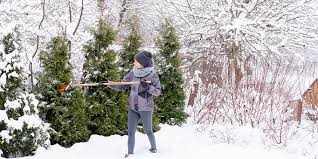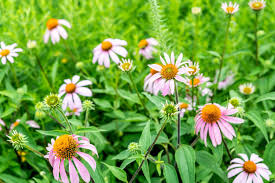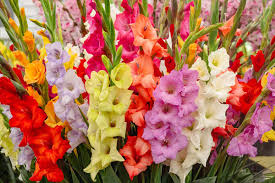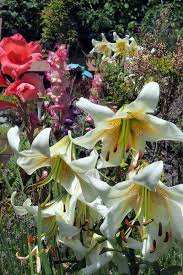After a long winter, your garden requires a lot of attention to ensure it’s ready for the growing season ahead. Having a checklist can help you stay organized and ensure you tackle necessary repairs, maintenance, and planting before summer arrives.
Spring can be overwhelming for gardeners, with tasks like planting and fertilizing being time-sensitive. This checklist is divided into three sections—early, mid, and late spring—ensuring you manage all the necessary tasks, whether you’re working in a warm or cooler climate. With a bit of planning, you’ll have vibrant plants, healthy soil, and an attractive landscape well before summer.
Early Spring (Mid-March to Mid-April)
1. Plan for Success:
Start by organizing your gardening plans. Review your journal from last year or start a new one. This helps you track repairs, upgrades, and planting schedules. Create a timeline to spread out tasks like cleaning tools, sowing seeds, and planting bulbs.
2. Check for Winter Damage:
Once winter ends, assess your garden for any damage caused by snow, frost, or pests. Inspect hardscapes (like fences and trellises) and plants for broken limbs or signs of critter damage. Make notes and prioritize repairs as the weather improves.

3. Clean Your Beds:
Clear away any dead plant matter, weeds, and debris from flower, herb, fruit, and vegetable beds. A light cleaning with a leaf rake is ideal for emerging shoots. Don’t forget to clean planters and containers, as well as ornamental grasses and herbs.
4. Divide Late Flowering Perennials:
Early spring is perfect for dividing late-blooming perennials, such as asters and coneflowers. If you’re new to dividing plants, there are plenty of guides to help you learn the process.

5. Feed Early Sprouters:
For early-emerging plants like chives, garlic, or rhubarb, top-dress with compost or well-aged manure to provide nutrients and protect delicate shoots from late frosts.
6. Prune Berry Canes, Shrubs, and Trees:
This is the best time to prune summer-flowering plants like hydrangeas, roses, and grapes. Remove damaged or crossed branches, and be sure not to prune early bloomers like azaleas and rhododendrons.
7. Repairs & Maintenance:
Clean, sharpen, and repair your gardening tools. Fix any damaged containers, birdhouses, and structures like fences and raised beds. This is also a good time to set up new structures or expand your raised beds.

Mid Spring (Mid-April to Mid-May)
1. Mulch or Feed Perennials:
After cleaning and pruning, spread a two-inch layer of mulch around perennials to retain moisture, suppress weeds, and enrich the soil. You can also apply a slow-release granular fertilizer for new growth.
2. Plant Summer Bulbs:
Once the risk of frost has passed, plant summer bulbs like dahlias, gladiolus, and lilies. Make sure to plant in humus-rich soil with bone meal to encourage fast root growth.

3. Set Out Supports for Vines and Tall Plants:
Install trellises, stakes, and supports for climbing plants like peas, beans, and clematis. This helps keep plants upright and promotes healthy growth.
4. Sow Cool-Season Vegetables:
Plant cool-weather crops like lettuce, spinach, kale, and peas. These thrive in cooler soil and should be sown directly into the ground once the soil temperature is right.
5. Start Summer Vegetables Indoors:
If you live in a region with a short growing season, start summer vegetables like tomatoes, peppers, and cucumbers indoors. This gives them a head start and ensures they mature before the cold sets in.
6. Remove Protective Covers:
Once the danger of frost has passed, remove any protective covers on your plants. Be sure to do this on a cloudy day to avoid shocking the plants with sudden exposure to the sun.
Late Spring (Mid-May to June)
1. Deadhead Early-Flowering Bulbs:
Once early blooms like tulips and daffodils have faded, deadhead them by cutting off spent flowers. This encourages the plant to focus its energy on bulb development for next season.
2. Direct Sow Annuals, Herbs, and Summer Vegetables:
Sow summer flowers and vegetables like marigolds, beans, and corn directly into your garden. Ensure the soil is warm enough (about 60°F or more) for successful germination.
3. Transplant Indoor Seedlings:
If you started vegetables indoors, now’s the time to transplant them outdoors. Ensure the soil is warm enough, and be cautious of the last frost date in your area.
4. Paint or Stain Hardscapes:
Wooden and metal structures like benches, fences, and trellises need regular maintenance. Before the heat of summer sets in, paint or stain these elements to protect them from the elements.
Final Thoughts:
By following this spring checklist, you can start your gardening season strong. Organize your tasks, tackle maintenance early, and get planting! With a bit of effort, you’ll create a healthy and beautiful garden that’s ready for the joys of summer.
Happy gardening!
